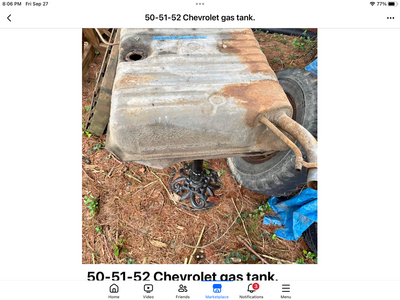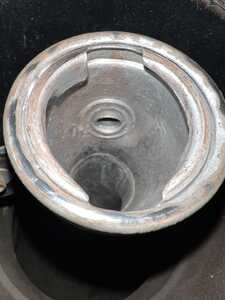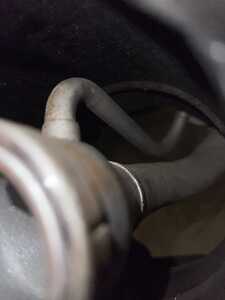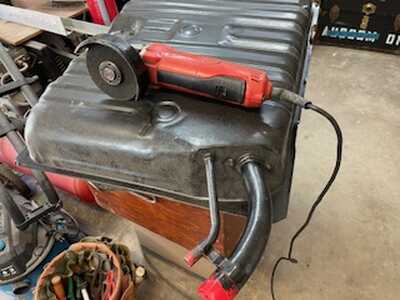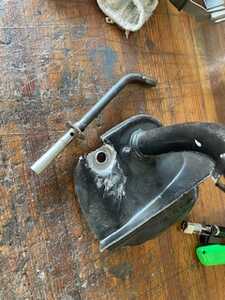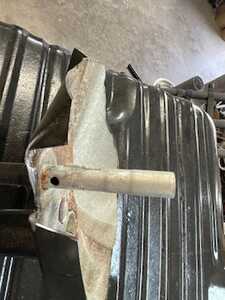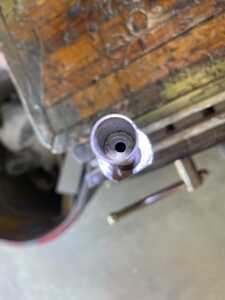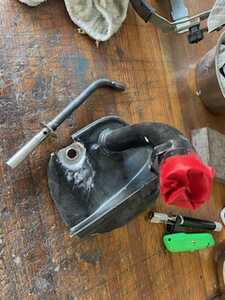I changed the fuel tank in my 1950 Sedan Deluxe along with all new fill and vent hoses. My old tank used to whistle when I was filling up with gasoline. This new equipment doesn't seem to know the tune. How can I restore that whistle? I suspect there is a fitting of some type installed in the tank or vent line that I was not aware of. Anyone know about them or can tell me what I am missing?
Do you still have the old tank? When I changed mine I set the old vent line aside to try to keep the whistle and adapt it to the new vent line. Then I wound up throwing it away during a garage cleaning. How stupid could I get. As I recall it looked like a 1/8” hole inside the tube for the vent. Wish I could have saved it. I’ve posted numerous times here and other websites have gotten nowhere for results. If you have any parts left over please post what you find.
thanks in advance, bill
Yamaha Vmax motorcycle & 50 chevy styleline dlx
Niles MI
Bill, Like you, I chucked the old tank not knowing the whistle gizmo was part of the tank or vent line. 20/20 hindsight.
ahhh, so the vent whistle saga goes on. I may just make something up and place it inside the vent line and see what happens. Need to burn up some gas first.
thanks,bill
Yamaha Vmax motorcycle & 50 chevy styleline dlx
Niles MI
If I knew what to build I would give it a go. Unfortunatly I do not have a clue as to what The gizzmo looks like or where it would be installed? If there is anyone out there that can enlighten me with a discription or photo you would make an old man happy.
According to this post on the old forum they were an accessory for some years. It is not listed in the 1941 accessory brochure but apparently was in later years. I have seen them for sale on eBay but that was a while ago. I hope the link works. Mike
https://vccachat.org/ubbthreads.php/topics/118646/n2chev.html
this is from my post from C/Talk back on 4/25/20
read this from Gene Schneider,
"From 1950 Engineering;
A gas tank filler signal is a new convenence feature on all 1950 vehicles except the station wagon. A whistle is installed on the lower end of the fuel tank vent pipe, which now extends into the tank isself. While the tank is being filled , the whiste is clearly audible, but when the rising fuel floods into the lower end of the vent pipe, the whistling ceases. At this point, a level that provides roomm for expansion in hot weather. Thus, the service station attendant is warned in plenty of time to avoid overflow..
A similar signal, but with a wider range, was an option for taxi cabs in 1949, and will be continued as such for 1950."
An accessory filler signal was availale for 1948 and the 1948 accessory booklet describes it as "avoiding waste and insuring faster filling and provides an anti-siphon baffle for gasoline protection. Easily installed in only a few minutes time."
The 1941-1948 models had to be filled slowly or the gas would blow back at you. Remember that well.
The only other car that I can remember have this feature was Packards of the era."
Gene Schneider
so the whistle is located close to the tank in the vent line. I had sawed the tube off my old tank which is what I threw out by mistake.
later, bill
Yamaha Vmax motorcycle & 50 chevy styleline dlx
Niles MI
@schudaddie55 Bill,
I came into a 1950 chevy gas tank that was cleaned, painted, and air tested; it flunked the air test having several pinholes in the bottom. I did an autopsy on it to learn what I could about the whistle. I discovered that the whistle device is in the vent line and positioned INSIDE the tank. The fill and vent tubes are soldered into the tank. The vent tube extends into the tank 2-3/4" The 1/2" OD vent tube has two holes in it; the one that produces the whistle is 11/64"in diameter, and is pressed up 1-1/4" into the end of the vent tube. The second hole is 13/64" in diameter and is drilled into the top of the vent tube close to the point where the vent exits the tank. It seems that as the tank is filling the vent line exhausts air through both orifices until the lower vent orifice becomes flooded and stops the whistling. At this point the higher and larger hole has the task of relieving all of the air at a faster velocity. I do not see how it would be possible to retrofit an OEM whistle device without removing the tank and replacing the vent tube. Hope this clears up some ambiguity over the musical gas tanks.
thank you so much for your complete and detailed information on the tank whistle. I’m not sure but I may be able to remove my tubes as they are bolted to my replacement tank. Just have to run the tank low on fuel and fab as needed. I’ve been hoping for a reply like this for years. Now to find the time to do it.
thanks again, Bill
Yamaha Vmax motorcycle & 50 chevy styleline dlx
Niles MI


